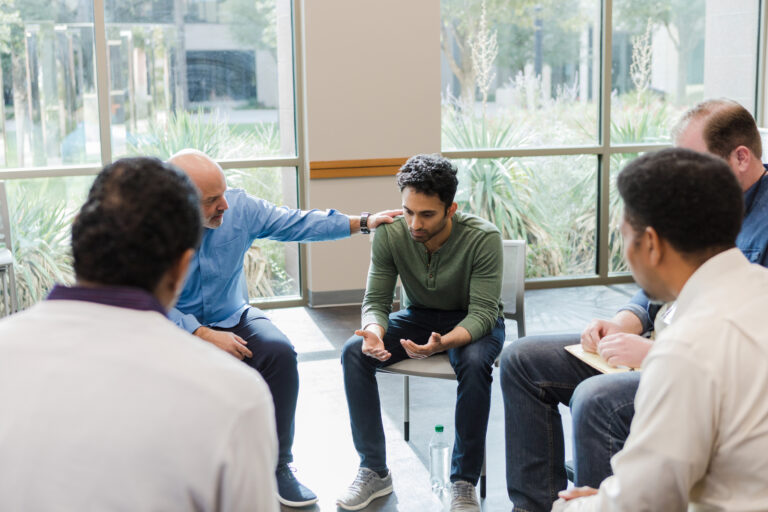When it comes to protecting individuals and families from the harm of substance use, prevention is everything. At Change Institute, real change starts with understanding that drug prevention interventions are not one-size-fits-all—they are dynamic, layered approaches that work best when tailored to the unique risks, settings, and stages of a person’s life.
Whether you’re a concerned parent, educator, employer, or health professional, knowing the types of drug prevention interventions—and how they work—can empower you to act with intention and confidence. These strategies are more than just educational campaigns or school programs. They are proven frameworks that help communities lower risk and promote healthier choices across all age groups.
In this guide, we’ll break down the three main types of prevention interventions—primary, secondary, and tertiary—and show how each plays a vital role in reducing substance misuse and supporting long-term recovery.
Understanding Drug Prevention as a Public Health Strategy
Before we get into the three types, it’s essential to understand prevention as a continuum. Drug prevention isn’t just about stopping people from ever trying substances (though that’s part of it). It’s also about reducing harm, spotting early warning signs, and building recovery support for those already struggling.
The Substance Abuse and Mental Health Services Administration outlines prevention as a layered effort—something that can be delivered in schools, homes, workplaces, and healthcare settings. At Change Institute, we apply this holistic model through personalized family interventions, coaching, and behavioral support, particularly when loved ones are on the verge of a crisis.
Let’s explore each type of prevention and its practical implications in real life. These approaches not only address the three types of drug prevention interventions but also help clarify what the primary prevention of drug addiction is in a family or community context.
1. Primary Prevention: Reducing Risk Before It Starts
Primary prevention aims to stop substance use before it ever begins. These are the strategies most people associate with drug education or anti-drug messaging. However, when done correctly, primary prevention is far more than that. It involves teaching life skills, promoting emotional well-being, and helping people—especially young people—develop healthy decision-making patterns.
At Change Institute, we often engage in primary prevention through family education, teaching parents and caregivers how to talk to teens about drug use in realistic, age-appropriate ways. Instead of using scare tactics, we employ evidence-based tools to foster open communication, build trust, and reduce curiosity-driven experimentation.
Examples of Primary Prevention:
- School-based programs that teach coping skills and substance refusal techniques
- Parent workshops and family education about adolescent brain development
- Community campaigns that promote healthy lifestyles and emotional regulation
- Peer mentoring or leadership programs in youth groups
Primary prevention addresses the core question: What is the primary prevention of drug addiction? It’s about building protective factors early, before a crisis takes hold.
In our intervention planning process, we help families recognize when their role can shift from a reactive to a proactive one. Even if a loved one isn’t currently using drugs, early conversations and boundary-setting can play a powerful preventive role.
2. Secondary Prevention: Identifying Early Warning Signs
Secondary prevention is all about early intervention. At this stage, someone might already be experimenting with substances or showing behaviors that put them at higher risk, but they haven’t yet developed addictive patterns.
This is the space where brief interventions and screenings make a critical difference. For example, when a college student begins drinking heavily but hasn’t yet “lost control”, a focused, one-on-one conversation using motivational interviewing can help them rethink their choices.
We use these same techniques at Change Institute when working with families who notice early red flags: missing work, lying about drinking, or sudden personality changes. Our brief intervention services are specifically designed to meet people at this tipping point—where the right conversation can truly change the outcome.
Components of Secondary Prevention:
- Early detection through screening tools like SBIRT (Screening, Brief Intervention, and Referral to Treatment)
- Targeted conversations that increase self-awareness and motivation
- Short-term counseling or coaching to disrupt harmful patterns
- Referrals to outpatient services or therapy when needed
With support from trained interventionists and evidence-based tools, you can help your loved one avoid escalating to more serious substance use.
3. Tertiary Prevention: Supporting Recovery and Preventing Relapse
By the time we reach tertiary prevention, substance use has already become a serious issue. This level of prevention is focused on treatment, recovery support, and relapse prevention. It’s about minimizing the long-term effects of addiction, restoring functionality, and helping individuals rebuild their lives in meaningful ways.
At Change Institute, our on-site drug intervention services often fall into this category—especially when a loved one is already in active addiction. Our work doesn’t end when someone enters treatment. In fact, much of our energy is devoted to helping families stay involved during recovery, set healthy boundaries, and support relapse prevention, through our Family Class program.
Why This Model Matters
These three types of prevention—primary, secondary, and tertiary—are not isolated steps. They work best when seen as a spectrum of care that adapts to where someone is on their journey.
In our experience, what matters most is timing, compassion, and follow-through. Prevention doesn’t just happen in classrooms or hospitals. It happens in living rooms, around kitchen tables, and during tough conversations at work or school.
That’s why our model at Change Institute is built around high-impact services that meet families where they are—physically and emotionally. Whether you’re having a first conversation about drinking or planning a full addiction intervention, we’re here to help you take that next step.
How Prevention Supports the Whole Family
Drug prevention doesn’t just help individuals—it protects the entire family system. When a loved one struggles with substance use, everyone feels the effects. That’s why each type of prevention also includes education and support for spouses, siblings, parents, and even friends.
We often say, “The opposite of addiction isn’t just sobriety—it’s connection.” That connection begins with prevention. Families that talk openly about addiction, get trained in intervention strategies, and support recovery as a shared process are more likely to see lasting change.
When Should You Act?
If you’re wondering whether it’s too soon—or too late—to intervene, we want to reassure you: the time to act is always now. Prevention works best before addiction sets in, but even late-stage intervention is life-saving. Whether you’re experiencing early warning signs or living with a daily crisis, there is support available.
We encourage you to start with a free consultation with our team. We’ll help you identify where your loved one is on the prevention spectrum and recommend a path forward that respects your family’s needs, budget, and emotional bandwidth.
Take the First Step with Change Institute
Whether you’re trying to prevent a child from experimenting with drugs, help a spouse reevaluate their alcohol use, or support a sibling through long-term recovery, you don’t have to do it alone.
At Change Institute, we bring prevention, intervention, and recovery into focus. Our team, led by renowned interventionist Brad Lamm, has helped thousands of families reclaim hope and move forward with strength.
We provide:
- Affordable, on-site intervention services nationwide
- Brief interventions and secondary prevention support
- Ongoing coaching and Family Class family education
- Partnerships with trusted treatment providers across the country
Ready to learn more about how prevention can work for your family?
Contact us today to speak with a care coordinator or schedule a free consultation.








